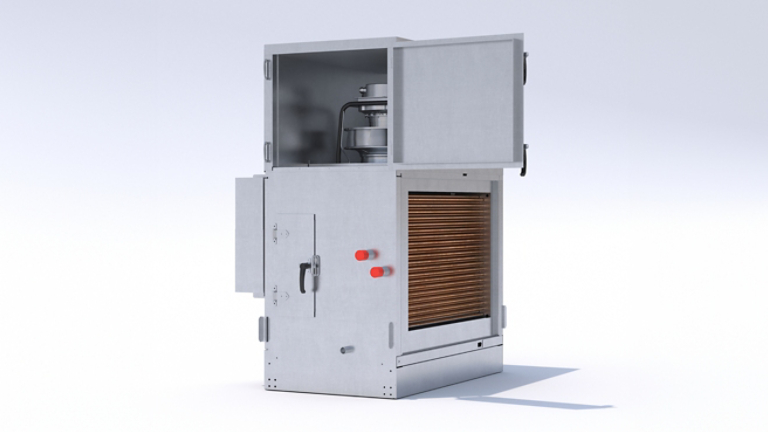Glossary
What Is a Commercial Air Handler?
Learn what a commercial air handler does and how it fits within an HVAC system.


Selecting a language changes the language and content on the Trane site.
Trane ComfortSite is an extranet site designed to save you time. With your secure login, you can:
This is the login for Trane® Connect™ and other Trane® commercial applications. Trane® Connect™ is our secure, cloud-based customer portal to access your building systems to remotely monitor and manage building systems, and conduct routine maintenance.
Latin America
Europe
Asia Pacific
Glossary
Learn what a commercial air handler does and how it fits within an HVAC system.


An air handler, also known as an air handling unit (AHU), is a large metal box that contains the necessary components to move and condition air within an HVAC system. Unlike a furnace or air conditioner, an air handler itself doesn't generate heat or coolness. Instead, it works in conjunction with other commercial HVAC equipment, such as chillers and boilers, to treat and distribute the air.
The primary functions of a commercial air handler are to draw in air, filter it, alter its temperature, and then distribute it throughout the building via a network of ducts. This process involves pulling in a mixture of outside air and recirculated air from within the building.
Several components work in unison within an air handler to ensure proper air treatment and circulation:
Fan/Blower: This is the powerhouse of a commercial AHU. It moves the air through the unit and into the ductwork.
Filters: Air filters maintain indoor air quality by capturing dust, pollen, and other airborne contaminants.
Heating and Cooling Coils: These coils are responsible for changing the temperature of the air. Depending on the system, they may be filled with hot water or steam from a heat pump or a boiler for heating, or chilled water from a chiller for cooling. In some systems, a direct expansion (DX) coil with refrigerant is used for cooling.
Dampers: These components control the flow of air, regulating the mixture of fresh outside air and recirculated indoor air.
Humidifiers and Dehumidifiers: Some advanced air handlers include these to control the moisture content of the air for enhanced comfort.
Controls: The BAS (building automation system) sequences valves, dampers, fan speeds, and setpoints for comfort and efficiency.
The air handler is central to the continuous cycle of air treatment in a commercial building. Here's how it fits into the overall HVAC system:
Air Intake: The process begins with the AHU's fan drawing in a specific ratio of outdoor air and return air from inside the building. Dampers help control this mixture.
Filtration: The incoming air first passes through filters that trap airborne particles, ensuring the air that circulates is clean.
Conditioning: Next, the filtered air moves across the heating or cooling coils. The building's thermostat signals whether heating or cooling is needed, and the appropriate coil is activated. For cooling, the coils absorb heat from the air. For heating, they transfer heat to the air.
Distribution: Once the air is conditioned to the desired temperature, the blower pushes it into the supply ductwork. This network of ducts carries the treated air to various zones throughout the building, where it is released through diffusers and vents.
Return Air: As the conditioned air circulates, it displaces the existing air in the rooms. This used air is then pulled back into the HVAC system through return air vents and ducts.
Recirculation and Exhaust: A portion of this return air is directed back to the air handler to be mixed with fresh outdoor air and reconditioned, conserving energy. The remainder is exhausted from the building. This continuous cycle ensures consistent temperature and fresh air throughout the commercial space.
Commercial air handlers are typically much larger and more robust than residential units, often serving multiple floors or zones, and may include advanced features like variable air volume (VAV) controls, heat recovery systems, and sophisticated filtration for improved indoor air quality.
Resources for Commercial Air Handlers
Case study: The Alchemist Brewery
Case study: William Blount High School
Trane Commercial HVAC offers a variety of air handling solutions for new construction and existing facilities. Contact your local Trane representative to discuss the options that will work best for your building.
